Resume Layout
- Keep your resume brief enough to fit on one page, or two pages if experience is extensive. Be sure the second page has enough information to cover at least half the page. Your name and page number should be included on the second page in the top right-hand corner.
- The top one-third of your resume is what a recruiter or hiring manager scans to determine if they will read the rest within seconds. You want to show what you can do for an employer, not what they can do for you.
- If your industry requires it, catch the hiring manager's attention by emphasizing your technical skill set. Doing so cements the value you can bring to the role, as opposed to what you're looking for in a job. Organize your resume so the experiences and skills you want an employer to see are highlighted and easy for them to find.
- Boldface type, italic type, underlining, and the use of some headings written entirely in CAPITAL LETTERS can highlight important parts of your resume. DON'T OVERDO IT!
- Resume templates are not recommended for an effective resume as there is limited flexibility in changing the format. It is recommended that you use MS Word for your resume giving you more layout options. For an excellent video on formatting tips using Word, see the resume information section on the CAPE website.
- It not always necessary to include all the schools you have attended under education.










